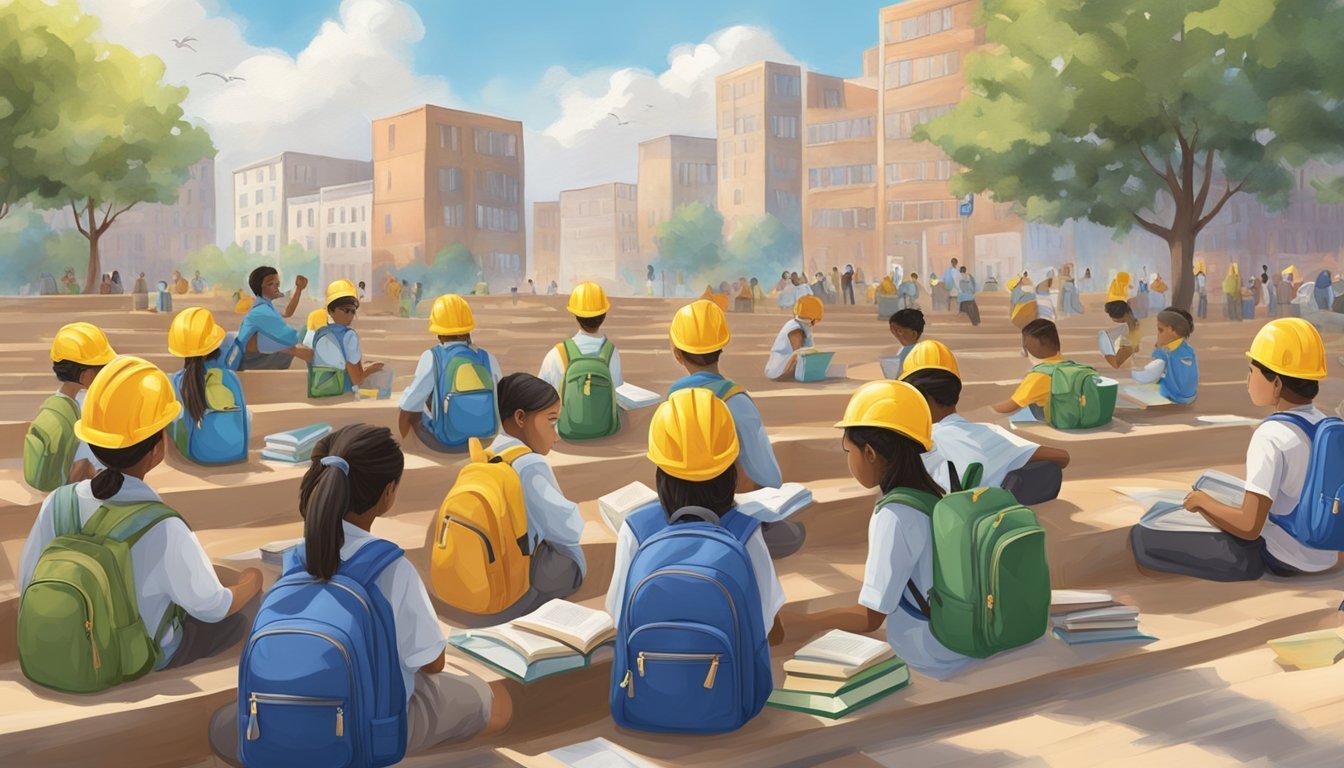Educational Struggles Resurface
Students at Sacred Heart Catholic School in Barrow-in-Furness have been navigating the challenges of learning in temporary facilities for nearly two years, a situation that continues to impact their education.
Inside a classroom, festive decorations linger, casting memories of past celebrations.
A whiteboard marks the spot where lessons took place before a sudden evacuation changed everything.
On January 16, 2023, the school, which has stood for 95 years, faced an urgent evacuation after a routine inspection uncovered serious structural issues, warning of a potential floor collapse.
The faculty immediately received orders to exit, highlighting the high risks involved.
Serving a community primarily composed of underprivileged children, Sacred Heart is situated near the high-security BAE Systems docks, where nuclear submarines are manufactured.
What began as a short-term disruption has turned into a protracted struggle, with students possibly returning to their original classrooms only by 2029—a full seven years post-evacuation, as the building is now classified as structurally unsound.
Impact on Learning and Facilities
Each morning, around 200 students gather outside their former school, braving the cold, damp weather typical of Cumbria.
They board three coaches for the two-mile journey to St. Bernard’s Catholic High School, where they are currently accommodated.
This journey, which should ideally take just 15 minutes, is complicated by the need to supervise a large number of children navigating a steep path to school, resulting in significant delays.
Often, the students arrive in their new classrooms around 9:30 a.m., leaving them restless and unprepared for learning.
According to the headteacher, this displacement has cost each child roughly ten hours of instructional time weekly, which adds up to about 130 hours per term.
This loss is reflected in their academic performance; only 46% of students met the expected standards in reading, writing, and mathematics at the end of key stage 2 last summer, compared to nearly 60% across the local authority and the national average.
Alarmingly, this figure dropped to just 18% this summer.
Teachers have noted a rise in students with special educational needs contributing to this trend, though they also recognize that the turmoil surrounding the school environment has exacerbated challenges faced by these children.
Community and Funding Challenges
On a chilly December day, a reporter observed groups of five- and six-year-olds queuing outside for temporary toilets, as the school’s main facilities remained unavailable.
If a child needs to visit the restroom during class, the entire group must wait outside the Portakabin, complicating logistics further.
Inside, learning sometimes occurs in hallways, with individual attention being crucial, especially for about 60 students needing additional support.
Their makeshift classrooms—converted from an office, a human resources room, and a storage area—feature worn carpets and broken windows, limiting their ability to engage in necessary hands-on activities like art, as there are no sinks available.
Additionally, the inadequacy of space means that the minimum requirement of two hours of physical education each week cannot be met—especially concerning for a community already grappling with high rates of obesity and health issues.
The surrounding neighborhoods are marked by severe economic deprivation, with many families facing hardships.
A significant portion of the local population lacks formal qualifications, and unemployment remains an ongoing challenge.
Low housing prices further exacerbate the community’s socio-economic struggles.
The headteacher voiced her deep frustration over the continued plight of her students.
When staff evacuated the original building, they uncovered learning materials contaminated with rodent droppings and children’s books damaged by dampness.
Thankfully, a local library stepped in, donating books that had initially been earmarked for disposal.
Currently, the youngest students find themselves confined to a tennis court, referenced colloquially as “the cage,” to ensure their safety amid older students.
Their designated outdoor space consists of nothing more than a muddy patch of grass, devoid of proper equipment or facilities.
Repeated requests for financial and logistical assistance have gone largely unanswered by the Department for Education (DfE) and other agencies.
Officials from the DfE did not visit the school until October 2023—ten months after the evacuation—while local authorities delayed engagement for nearly a year.
While the DfE has agreed to reimburse some extra staffing costs incurred by Sacred Heart, they initially rejected covering the substantial weekly coach expenses of £4,865 or subsidizing the temporary outdoor toilets, a decision that was later reversed after the media highlighted the school’s plight.
The headteacher showcased her concern that these ongoing disruptions will plunge the school into a significant financial deficit, necessitating a diversion of funds intended for educational initiatives to cover urgent needs like sanitation facilities.
After initially being denied emergency funding in September 2023, the school has now been accepted into the rebuilding program.
The contrast could not be more stark: while the local community struggles, BAE Systems continues to draw vast investments for nuclear submarine production.
The headteacher pointed out the irony of seeing extensive resources funneled into military endeavors while her school and its students remain in such dire conditions.
She expressed the belief that the school’s geographic and socio-economic context may have influenced the lack of attention it has received, suggesting that this predicament would likely be viewed very differently in more affluent areas.
Inquiries directed to the Conservative party have sought a response on this matter.
A spokesperson from the DfE recognized the challenges associated with maintaining a school estate in need of significant repairs, reaffirming their commitment to addressing these issues and ensuring all students receive quality education.
Sacred Heart is now being included in the rebuilding initiative, and the DfE is collaborating with the school’s academy trust to formulate temporary solutions while a permanent resolution is sought.
Source: The Guardian


